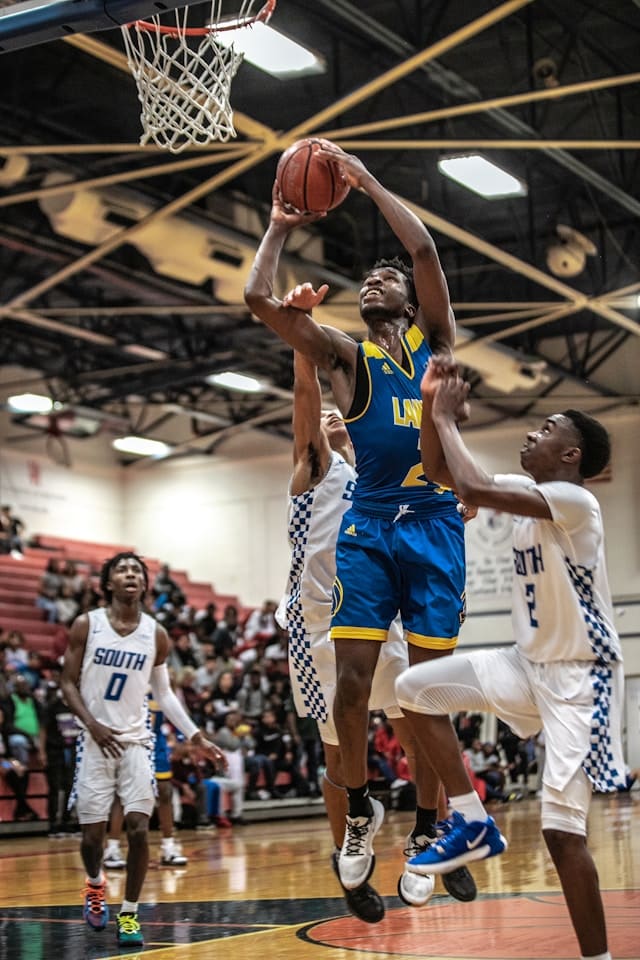What Specific Drills Can Improve Defensive Positioning in Youth Basketball Players?

In the world of basketball, the mantra often heard is "Offense sells tickets, but defense wins games". This enshrines the significance of defense as a vital part of the game. Often overlooked, defense is a skill that requires focus, determination, and constant practice. It is the backbone that helps maintain the balance of the team’s performance. In order to achieve a strong defensive team, it is crucial to engage in specific drills that can enhance defensive positioning, especially for youth players who are still learning the ropes. The following sections will delve into the specific drills that can help young basketball players improve their defensive positioning.
Engaging in Defensive Stance Drills
The defensive stance is one of the most fundamental yet crucial aspects of a good defense. It is the base from which all other defensive movements stem. Hence, practicing the proper defensive stance is important for improving defensive positioning.
A lire aussi : How Can Nutrigenomics Be Applied to Personalize Diets for Elite Athletes?
The defensive stance drills involve teaching players how to maintain a low and wide stance, with their feet shoulder-width apart and their knees bent. Their hands should be up and active, ready to deter any passes or shots from the opposing player. A common drill involves the coach moving around the court with the players shadowing them, maintaining their stance and reacting to the coach’s movements.
Running this drill repeatedly helps players build the necessary muscle memory to maintain the correct defensive stance. It also aids in developing the agility and quickness required for good defensive positioning.
A lire aussi : How Can Heat Acclimation Training Benefit Athletes Preparing for Competitions in Hot Climates?
Incorporating Closeout Drills
Closeouts are a significant part of basketball defense. They involve the defender rushing towards an offensive player who has just received the ball, in an attempt to disrupt the shot or pass. Incorporating closeout drills in practice can greatly improve a player’s defensive positioning.
A sample closeout drill can involve a player starting under the basket while the coach or another player stands at the perimeter with a ball. The player then sprints towards the individual with the ball, gradually slowing down as they approach to get into a proper defensive stance. The aim is to reach the offensive player quickly, but without losing control or giving up an easy drive to the basket.
This drill emphasizes the importance of speed and control in defense. It teaches young players to efficiently transition from a sprint to a defensive slide, a key aspect of good defensive positioning.
Implementing Shell Drills
Shell drills are a staple in basketball coaching. They focus on team defense and can be particularly effective in improving defensive positioning among youth players.
Typically, a shell drill involves four offensive players positioned around the perimeter, with four defensive players matching up against them. The aim is for the defensive players to maintain their position and prevent the offensive players from scoring. This involves communication, quick switches, and good recovery.
The shell drill is excellent for teaching young players about the importance of staying between their man and the basket, and how to react to ball and player movement. It can greatly enhance their understanding of how to position themselves defensively, both in one-on-one situations and in a team defense context.
Focusing on Defensive Slide Drills
Another drill that significantly improves defensive positioning is the defensive slide drill. Defensive slides are the primary movement used by players when defending the ball. This drill helps to increase lateral quickness, improve balance, and develop the proper technique needed for effective defense.
The defensive slide drill involves the players starting on one side of the key, then sliding across to the other side in a defensive stance. They do this repetitively, going back and forth while maintaining the correct stance and form.
By focusing on this exercise, young players learn the importance of staying low and wide, and leading with their hips when moving laterally. This drill can go a long way in improving their defensive positioning on the court.
Properly incorporated and consistently practiced, these specific drills can greatly enhance defensive positioning in youth basketball players. They not only build the required physical skills but also develop the mental understanding needed for effective defensive play. It is essential to make these drills a regular part of training sessions for noticeable improvement.
Emphasizing on Box Out Drills
Boxing out is a crucial element of basketball defense. It involves a player positioning themselves between the opposing player and the basket immediately after a shot is taken, in order to secure a rebound. This is a critical skill that youth players should master to effectively improve their defensive positioning.
Box out drills typically involve the coach shooting the ball while the players, paired up, try to establish a box out position and then go for the rebound. The player’s feet should be wider than their shoulders, with their back facing the basket. They should then use their body to block the opposing player, allowing them to secure the rebound when the shot misses.
This drill not only helps to improve a player’s rebounding ability, but it also enhances their awareness of where the ball is and where their player is. The players learn to react quickly after a shot is taken, focusing on both the ball and their opposing player. It’s a drill that instills the importance of completing a defensive possession by securing the rebound.
Applying Zig Zag Drills
Zig zag drills can be instrumental in working on a player’s defensive slide and change of direction. The concept of the drill is simple but the impact on a player’s defensive capabilities can be substantial.
The drill starts at one end of the court, with the player in a defensive stance. The player then slides diagonally across the court, changing direction whenever they reach the sideline. The goal is to maintain the defensive stance throughout and to pivot on the balls of the feet when changing direction.
The zig zag drill is specifically designed to improve lateral quickness, footwork, and the ability to change direction swiftly. All these qualities are essential for maintaining good defensive positioning on the court. The drill not only builds physical stamina but also enhances a player’s focus and determination to stay with their player, irrespective of the offensive moves being made.
Conclusion
In the competitive sport of basketball, defense is the key to success. For youth players, understanding and mastering defensive positioning is an essential step towards developing into a well-rounded player. The aforementioned drills – defensive stance drills, closeout drills, shell drills, defensive slide drills, box out drills and zig zag drills – all contribute significantly to enhancing defensive positioning in basketball.
Each of these drills focus on different aspects of defensive play, from maintaining a proper stance and reacting quickly to offensive moves, to securing rebounds and improving lateral quickness. When consistently practiced and correctly executed, these drills can greatly improve a youth player’s defensive skills.
The role of the coach is to ensure that these drills are incorporated into regular training sessions and to provide constructive feedback to help the players improve. The players, on the other hand, need to show dedication and commitment to mastering these drills. With time, significant improvements in defensive positioning can be seen, ultimately leading to a stronger, more effective defensive team.
